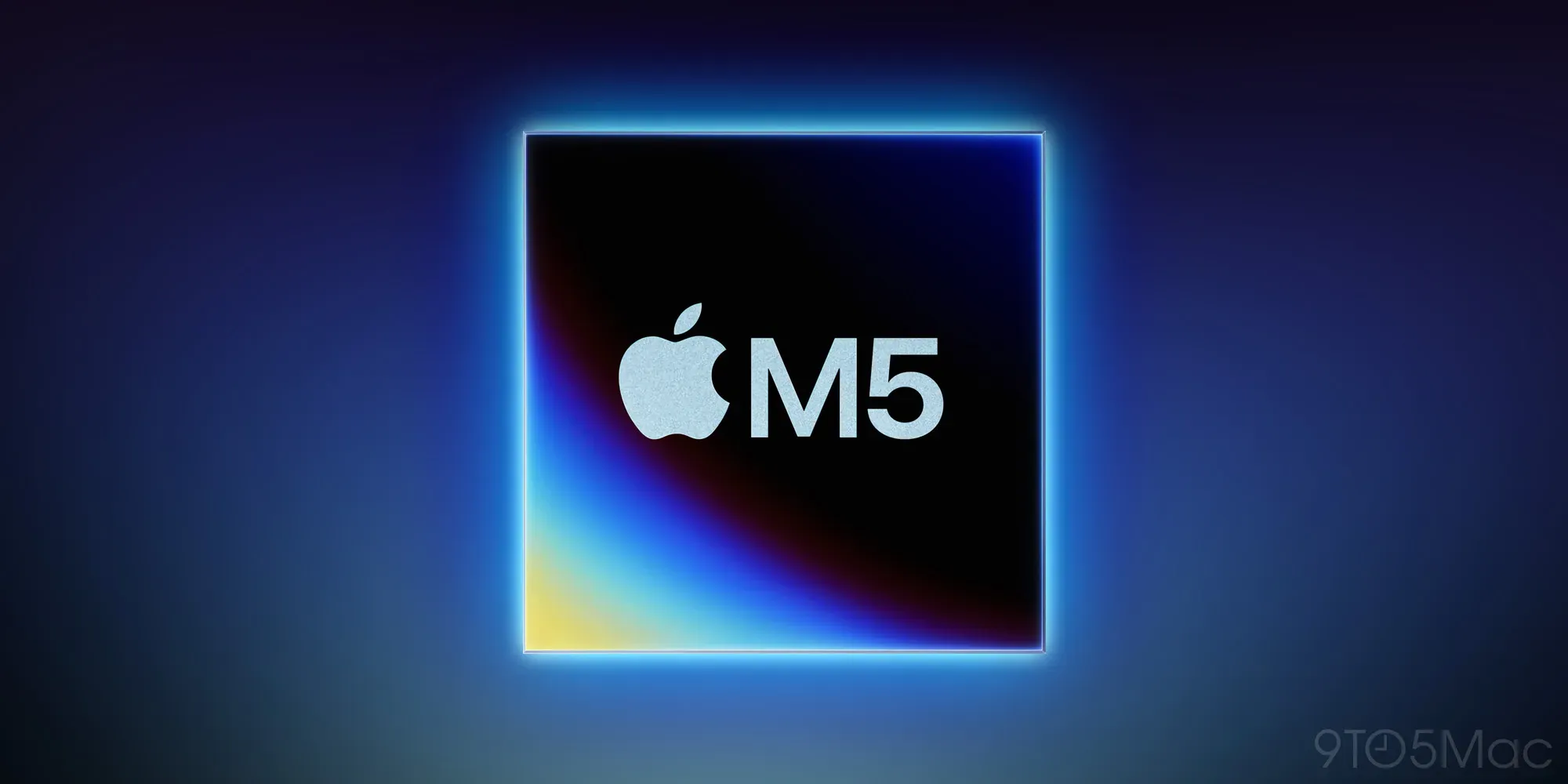This article contains affiliate links. As an Amazon Associate, Next Level Mac earns from qualifying purchases.
Apple’s fall calendar just got interesting. Multiple leaks point to an October reveal that moves the base M5 MacBook Pro up earlier than expected.
That timing lines up with unusual inventory delays for today’s base 14-inch model. It also tracks with fresh filings and model numbers that started popping up at the end of last month.
The headline is simple. The base M5 MacBook Pro looks set to arrive first, with higher-end M5 Pro and M5 Max systems sliding into early next year.
That split would be a change from the way Apple rolled out the M3 and M4 series. Those lines debuted together across Pro and Max tiers.
Why split now? The most likely reason is that Apple has enough finished M5 silicon to ship entry hardware, while the more complex chips need a little more time.
Two key factors stand out. First, there are several products queued up with M5, which makes an October event worth doing.
Second, the higher-end chips are expected to use a new packaging approach called SOICMH. That is a big architectural shift compared to the current all-in-one die.
If Apple is separating CPU and GPU modules with that packaging, it opens up mix-and-match core options on Pro and Max. That would let buyers pick a bigger GPU without overpaying for a CPU they don’t need.
It also gives Apple more flexibility in binning. If a CPU cluster fails testing but the GPU cluster is perfect, that GPU might still ship in a balanced config.
There’s another angle. Launching the base M5 first gives the new chip a moment without Pro and Max overshadowing it.
It also creates space to spotlight multiple M5 devices over a few days. That staggered press cadence worked last year.
Here’s the short list of hardware tied to M5 right now. A base 14-inch MacBook Pro. An iPad Pro refresh. A new Vision Pro variant. Potentially a new iMac and Mac mini.
There are also whispers around AirTags 2, a HomePod mini 2, and a new Apple TV 4K. Those aren’t M5 products, but they pair well with an October show.
On performance, the M5 jump looks bigger than expected. Early iPad Pro numbers point to roughly a 35 percent GPU lift over equivalent M4 cores.
That’s a sizable bump. One likely explanation is per-core neural logic inside each GPU core, similar to what Apple has done on the phone side this year.
If that’s accurate, AI-flavored tasks and effects would scale more cleanly with larger GPU counts. That’s especially useful for creative work and real-time filters.
On the Mac side, that could speed up things like background removal, upscaling, and timeline effects in the apps people already use every day.
For buyers trying to plan, here’s a practical way to think about it. If the smallest, simplest MacBook Pro is the goal, the base M5 may be worth waiting a beat for.
If high-end multi-GPU compute is essential, holding for M5 Pro or M5 Max makes sense. The modular packaging rumor could make those models more flexible and more affordable for GPU-heavy needs.
For iPad fans, an M5 iPad Pro would make the current lineup feel short-lived. If a tablet upgrade is on the list, it’s smart to pause until Apple speaks.
For Vision Pro watchers, a refreshed model with M5 would help battery life and thermal headroom. That would also future-proof heavier workflows as visionOS apps grow up.
On desktop, new iMac and Mac mini identifiers tend to show up ahead of releases. If those land, expect quiet but meaningful bumps.
Now, get ready with gear that still makes sense whether a purchase happens today or next week. Accessories outlive a single chip cycle, so they’re safe moves during rumor season.
A good Thunderbolt 4 dock solves ports, power, and desk clutter. The CalDigit TS4 is a dependable pick with 18 ports, 98 W host charging, SD and microSD, 2.5 GbE, and three TB4 downstream ports for monitors and fast storage.
Where you can get the CalDigit TS4 Thunderbolt 4 Dock (Amazon Affiliate Link): https://www.amazon.com/CalDigit-TS4-Thunderbolt-Dock-USB/dp/B09GK8LBWS?tag=blainelocklai-20&gbOpenExternal=1
If work bounces between home and office, a dock like this keeps a new MacBook Pro ready with one cable. It also plays nice with current M-series Macs if the plan is to wait for Pro or Max.
Fast external storage is the other easy win. Samsung’s T9 Portable SSD over USB 3.2 Gen 2x2 is a solid option that delivers up to 2,000 MB/s on Macs that support it, while staying cool under sustained loads.
Here’s where to get the Samsung T9 Portable SSD 2TB (Amazon Affiliate Link): https://www.amazon.com/SAMSUNG-Portable-Professionals-MU-PG2T0B-AM/dp/B0CHFS9K14?tag=blainelocklai-20&gbOpenExternal=1
This drive handles large photo libraries, Final Cut proxies, and Logic projects without adding weight. On machines without 2x2, it still performs well and remains a quick swap between Mac and iPad Pro.
For power, there are two ways to go. If first-party is preferred, Apple’s 140 W USB-C Power Adapter fits 16-inch models and will carry forward to whatever Apple ships next.
This is where to buy the Apple 140W USB-C Power Adapter (Amazon Affiliate Link): https://www.amazon.com/Apple-140W-USB-C-Power-Adapter/dp/B09JR6DBFH?tag=blainelocklai-20&gbOpenExternal=1
Travelers often keep one high-watt brick in the backpack and leave another on the desk. That makes the setup feel the same in both places.
Back to the October window. The timing lands within the next week and a half. That matches the supply signals and the filing cadence Apple usually follows.
Apple could choose a single event or spread press releases over consecutive days. The latter makes every product easier to digest.
For the MacBook Pro base model, watch for a familiar chassis with updated internals. The big story should be battery life and the GPU uplift.
For the iPad Pro, an M5 bump would keep the tablet clear of the Air. Expect headroom for video editing, 3D object capture, and multi-app workflows.
Vision Pro with M5 would be about comfort and sustained performance. The headset benefits as much from efficiency as raw speed.
For iMac and Mac mini, configuration tweaks paired with M5 would be the draw. If both ship, they anchor the desktop story while the laptop carries the headline.
One extra note on that modular Pro and Max rumor. If Apple separates CPU and GPU tiles, spec sheets will look different.
Higher GPU tiers might be paired with mid CPU tiers. That would be new for Apple silicon Macs and a welcome change for anyone who cares more about graphics than CPU cores.
That approach also makes a future Ultra easier to scale. It’s simpler to stack two balanced packages than one giant monolithic die.
If choosing between buying today or waiting, accessories first is the safe plan. A dock, a fast SSD, and a charger are useful no matter what lands.
When Apple does announce, it becomes easy to add the computer without rethinking the rest of the setup. That keeps the desk clean and the workflow steady.
For now, keep an eye on Apple’s newsroom and the usual press invites. The moment one hits, the base M5 MacBook Pro story becomes official.
Until then, the signals are consistent. Entry M5 soon. Pro and Max after. A few nice extras along the way.
If the 35 percent GPU lift holds, creative work will feel snappier on day one. That’s a change that shows up in real projects.
Wrap up like this. Prepare with the essentials today. Watch for the invite. Then pick the right M5 machine when Apple makes it real.
That plan keeps costs sensible, keeps joy high, and keeps an Apple life running smooth when new Macs finally drop.



Related Posts
The TRUTH About Apple Intelligence Will Surprise You
Oct 25, 2025
How to Stay Comfortable and Creative During Long Mac Sessions
Oct 23, 2025
Privacy Screen Filters for MacBook: Protect Your Data
Oct 20, 2025